INDIAN ARMED FORCES CHIEFS ON
OUR RELENTLESS AND FOCUSED PUBLISHING EFFORTS

SP Guide Publications puts forth a well compiled articulation of issues, pursuits and accomplishments of the Indian Army, over the years

I am confident that SP Guide Publications would continue to inform, inspire and influence.

My compliments to SP Guide Publications for informative and credible reportage on contemporary aerospace issues over the past six decades.
- Prime Minister witnesses 'Bharat Shakti' – a Tri-Services Firing and Manoeuvre Exercise in Pokhran, Rajasthan
- Interim Defence Budget 2024-25 — An Analysis
- Union Defence budget 2024
- Prime Minister Modi Commemorates Indian Navy Day in a Grand Ceremony
- Prime Minister Modi Flies in the LCA Tejas
- New Chapter in India-Italy Defence Ties
- Airpower beyond Boundaries
India: Rotorcraft Central
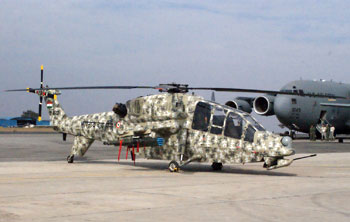
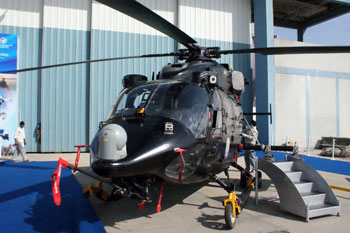
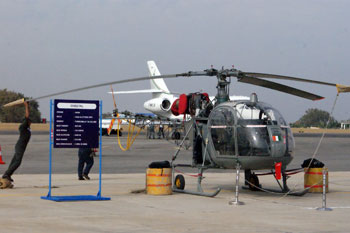
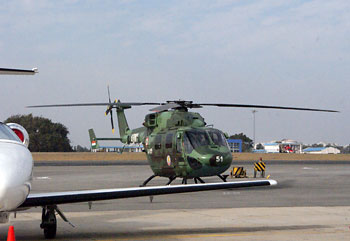
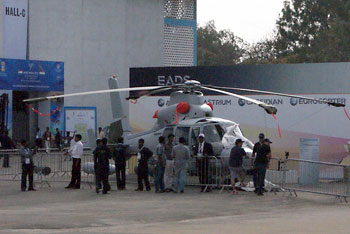
The deal conspicuous by its lack of apparent movement towards a decision is the reconnaissance and surveillance helicopter (RSH) bid that squares the Eurocopter AS550 C3 Fennec against Russia’s Kamov Ka-226T Sergei to give the Indian Army and IAF light helicopters for high altitude logistical and other operations. And the questionmark that hangs over the deal is writ large here at Aero India. From an RFP release in 2008 and field evaluation trials that were completed in January 2011, the competition remains in limbo, with nary a decision nor any indication of when the MoD may decide. Both Rosoboronexport, which governs Kamov, and EADS subsidiary Eurocopter were recently asked to extend the validity of their commercial bids for the fourth time. There is exasperation and anxiety in both camps. Eurocopter is particularly nervous considering it has had a near win be turned into a defeat with a shock re-tender in December 2007. The stakes are high too. While the deal itself may hover at under a billion dollars in value, it involves a full purchase from the OEM’s production line without the rigour of technology transfer and is for the decidedly high order of 197 helicopters -- the largest single order of either type ever if it comes through.
The other substantial contract that remains undecided is the Indian Navy’s multi-role helicopter (MRH) programme for 16 helicopters, in which bids are all set to be opened at any time. The NHIndustries NH90 competes with the Sikorsky S-70B Sea Hawk for a deal that could be potentially worth $1 billion. In this particular competition, field evaluation trials were completed in late 2011. The competition has been far from smoothe, with accusatory letters flying thick and fast to the MoD calling for a pause in proceedings over allegations of lack of fair play. The MRH competition looks to augment and replace the Indian Navy’s fleet of ageing Westland Seakings. The Indian Navy also happens to be in the process of evaluating upgrade bids for the old Seaking fleet of shipborne multi-role helicopters -- the Navy is currently evaluating packages offered by AgustaWestland and Israel’s IAI.
Just in case Indian contracting wasn’t protracted enough, the MRH programme will be swiftly followed by what the Navy calls the NMRH, an entirely separate tender for 44 helicopters. In this, the Lockheed Martin’s MH-60R, which dropped out of the MRH competition, will take part.
The Indian Navy is clearly where all the action is as far as rotorcraft are concerned. In August last year, it announced interest in acquiring 56 new generation utility helicopters for a competition christened naval utility helicopter (NUH). According to documents, the navy says it is interested in a twin-engine helicopter that is adverse weather day and night capable for missions across the spectrum of operations that will encompass SAR, CASEVAC, logistics, communication duties, observation and surveillance, basic ELINT gathering, anti-submarine attack with a light torpedo or depth charge, dynamic response during aid to civil authorities and anti terrorism or piracy. The Indian Coast Guard, which recently celebrated its 36th anniversary, is also looking for utility helicopters for similar roles. Eurocopter, which fielded the Fennec at Aero India 2011, has chosen instead to put on display the navalised AS 565 Panther, a platform on offer to the Indian Navy and Indian Coast Guard. Other contenders are expected to include Russian Helicopter, Sikorsky and AgustaWestland.
With the HAL-IAI Chetak-based NRUAV delayed and unproven, the Indian Navy is also to make a decision on a shipborne unmanned rotorcraft for surveillance and target acquisition. Northrop Grumman, Saab and others remain contenders and await guidance in how the Navy plans to play.
Aero India 2013 comes shortly after big ticket decisions in the Indian rotorcraft space. In October last year, Boeing CH-47F Chinook was declared lowest bidder in the IAF’s heavy-lift helicopter tender for 15 units. It defeated the formidable Russian Mi-26T2 helicopter. Shortly before that, Boeing AH-64D Apache Block III beat the Russian Mi-28NE Night Hunter for the IAF’s attack helicopter requirement. The twin victories have put Boeing Defense on a sweet wicket ahead of the big show – the company now has the largest in value terms of Indian defence business of any American vendor, and there’s potentially more in the pipeline. Aero India 2013 will see a highly welcome milestone with the handing over of the first indigenously developed ALH Rudra armed helicopter to the Indian Army. The Mk.4 version of the ALH Dhruv – a flagship of HAL – will be a formidable addition to the Army Aviation Corps arsenal. The platform paves the way also for the promising light combat helicopter that will shortly be joined in flight test by a third prototype that promises to be a far lighter, more capable machine than the two vehicles flying currently.
Several other opportunities remain hanging in the balance. HAL’s light utility helicopter – a mock-up of which will be visible once again this year – needs an engine and systems, and there’s already a competition on between LHTEC (a joint venture of Rolls-Royce and Honeywell) and Turbomeca. And finally, though a little more remote in the current circumstances, is the Indian Multi-role Helicopter (IMRH), HAL indigenous proposition that remains on the drawing board for want of a technology partner. This, like other opportunities, remains wide open.





